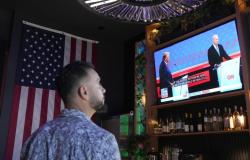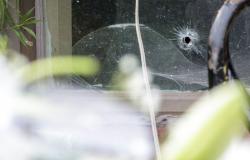JAKARTA – Problems with Boeing’s Starliner capsule, which is still stuck aboard the International Space Station (ISS), have disrupted initial plans to return its two astronauts to Earth. The last-minute improvements and tests extend a very important mission for Boeing’s future space division.
NASA has postponed the planned return three times, and there is currently no date set. Since its launch on June 5, the capsule has experienced five helium leaks, five boosters maneuvering dead and one propellane valve failing to fully close. This prevented the space crew and mission managers in Houston from spending more time troubleshooting the problem during the mission.
Here’s an explanation of the potential future path for Starliner and two veteran NASA astronauts, Barry “Bitch” Wilmore and Sunita “Suni” Williams.
Starliners can remain delayed on the ISS for up to 45 days, according to a comment from NASA Commercial Crew Director Steve Stich. However, if necessary, for example if there are new issues that cannot be resolved in time, the capsules may remain delayed for up to 72 days, depending on various reserve systems.
Inside, NASA plans Starliner’s final return on July 6. This date means that the mission initially planned for eight days will last a month. The unique Starliner propulsion system is part of a capsule “service module”. The current problem focuses on this system, which is necessary to separate the capsule from the ISS and position it for re-entry into Earth’s atmosphere.
Many Starliner boosters experience overheating when in use, and Helen leakage – used to suppress the boosters – appears to be related to the frequency of the boosters used.
Stich said the latest propulsion test while Starliner was still late to give the mission team confidence for a safe return, although tests and reviews were still underway. The mission management team, made up of members from NASA and Boeing, reviews data on propulsion problems, runs simulations in Houston and considers how to improve them, such as updating software or changing the way the material is used.
After NASA officials approve the return, the Starliner boosters will be used to release capsules from the ISS and begin a roughly six-hour journey to Earth, gradually tightening its orbit before returning to Earth’s atmosphere to land, assisted by parachutists and air bags, in one of several potential locations in the southwestern United States.
It’s Starliner’s first mission into orbit to bring astronauts – the final test needed before NASA can get it cleared as a vehicle of America’s second space agency to go to the ISS. Starliner will join SpaceX’s Dragon Crew, which has dominated the public and private markets for human spaceflight amid years of Starliner delays.
Despite the propulsion system problems, NASA said Starliner could still return astronauts to Earth if necessary were very necessary – for example if the capsule should serve as ISS emergency capsules in an emergency situation or if Starliner’s perishable item – such as solar panels – is showing signs of expiring sooner than expected.
Unlike current missions, NASA did not set a return date for the first dragon crew mission carrying the astronauts in 2020. The mission ultimately lasted 62 days because the astronauts had to help with maintenance of the ISS due to a lack of personnel.
If Starliner is deemed incapable of returning Wilmore and Williams to Earth safely, one option would be to send them home with Crew Dragon, which brings four astronauts to the station in March and could accommodate more people in an emergency .
This scenario, considered impossible, would be very shameful for Boeing. However, NASA and Boeing officials, as well as engineers familiar with the program, said there are no current issues that suggest it was necessary.
In this context, the fate of Starliner depends on various factors, including the extent of technical problems.
The last time a NASA astronaut needed an alternate vehicle to get home was in 2022, when the Russian Be capsule suffered a cooling leak after sending two cosmonauts and American astronaut Frank Rubio to the station. NASA considered Crew Dragon as an alternative vehicle to Rubio, but ultimately used an empty capsule launched by Russia as a backup ship. The Rubio mission was extended from six months to more than a year – 371 days – a record length of time for Americans in space.
Tag: boeing iss nasa






